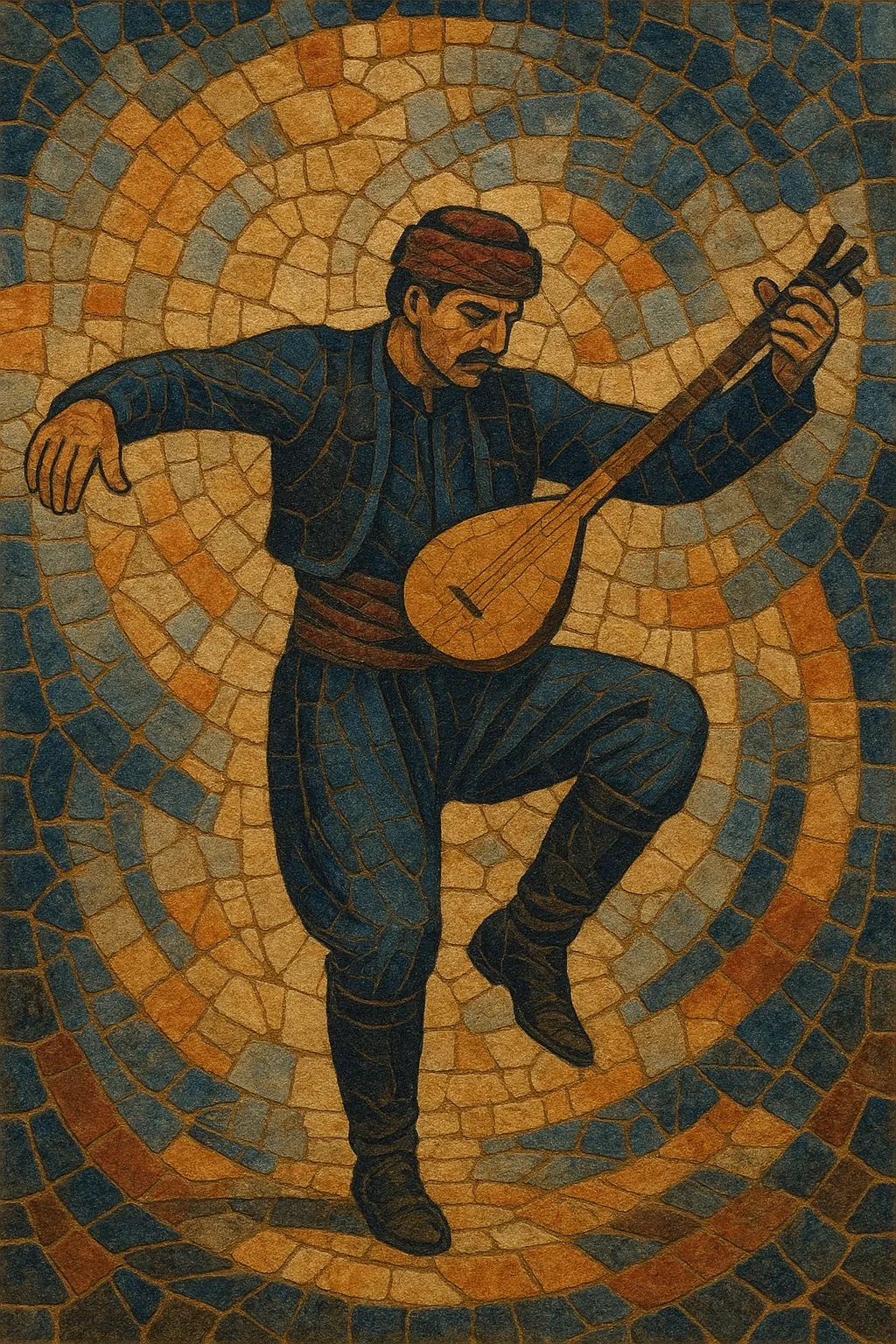Zeybek is a traditional musical-dance style from Western Anatolia (the Aegean region of Turkey) characterized by asymmetric aksak meters—most commonly 9/8 divided as 2+2+2+3—and a proud, heroic bearing. It exists in two main tempo families: ağır zeybek (slow, weighty, processional) and kıvrak zeybek (lively, agile).
The music typically features modal (makam-based) melodies ornamented with slides and grace notes, performed on instruments such as bağlama (saz), cura, zurna and davul in rural settings, and clarinet, oud, kanun, and violin in urban arrangements. The dance is often a solo male performance (but also danced in groups), with outstretched arms and measured steps that evoke dignity and defiance, reflecting the ethos of the Aegean efe (local militia/outlaw) culture.
Zeybek crystallized in the Aegean provinces of Western Anatolia during the 19th century, drawing on older village ceremonial tunes and dances. It is closely tied to the efe/zeybek culture—local militias and community protectors—whose values of bravery and independence are mirrored in the music’s weighty cadence and the dance’s proud posture.
By the late Ottoman period, zeybek melodies circulated widely through village festivities with zurna–davul bands, while urban musicians adapted the repertoire for modal (makam) ensembles. In the early Turkish Republic, collectors and radio producers documented and standardized numerous regional zeybek variants for national broadcasting (TRT), helping to fix canonical forms such as ağır and kıvrak zeybek and to popularize them beyond the Aegean.
Aegean communities on both shores shared repertoire and rhythmic habits. The 9/8 zeybek rhythm fed into Greek urban genres, most famously the zeibekiko of the rebetiko and later laïko traditions, where the heroic ethos was reinterpreted for cosmopolitan audiences. Population movements in the early 20th century intensified this exchange and diversification of form and instrumentation.
Today, zeybek thrives in folk ensembles, conservatories, and staged folklore shows. Urban arrangements spotlight clarinet and string instruments, while village performances retain the raw power of zurna and davul. Modern Turkish and Anatolian rock acts frequently reference zeybek meters and melodic gestures, underscoring the style’s continuing cultural resonance.
Write in two archetypes:
•Ağır zeybek: slow, majestic, with ample space between phrases and strong pedal tones or open-string drones on bağlama.
•Kıvrak zeybek: livelier, with tighter melodic cells and more agile ornaments.
•Use call-and-response between melody leader and ensemble drones or rhythmic ostinati.


